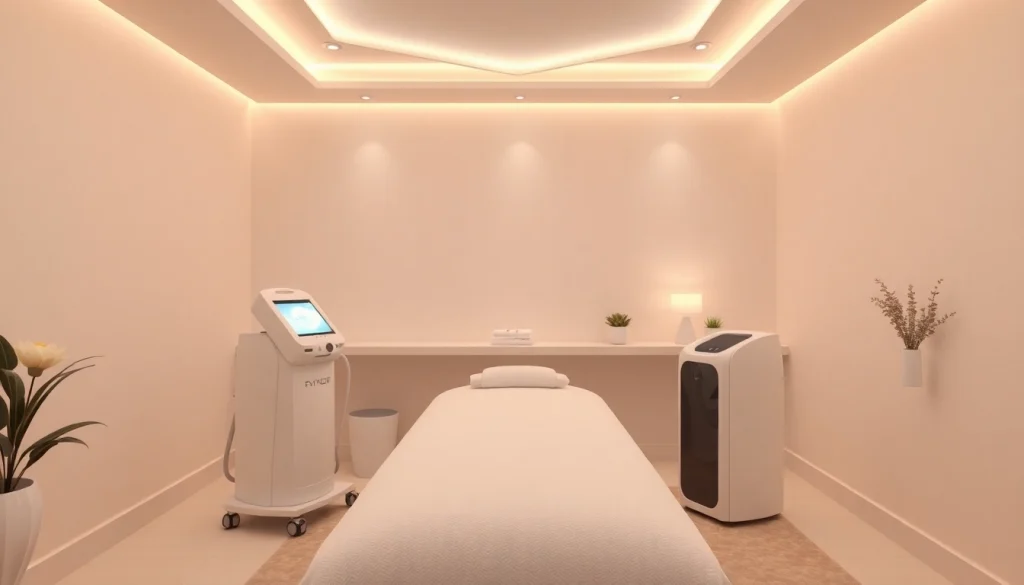Understanding Fat Reduction
What is Fat Reduction?
Fat reduction encompasses a variety of methods aimed at eliminating excess body fat. This can include both surgical and non-surgical procedures tailored to target specific areas of the body where fat accumulates, often in places resistant to diet and exercise. The goal of fat reduction not only involves enhancing physical appearance through body contouring but also promoting overall health by decreasing body fat levels that can contribute to cardiovascular disease and diabetes. It plays a crucial role in weight management strategies and body positivity initiatives.
Different Types of Fat Reduction Techniques
Fat reduction methods are varied and can be broadly classified into surgical and non-surgical techniques:
- Surgical Techniques: Includes procedures like liposuction, which physically removes fat deposits, and gastric bypass surgery, which reduces the stomach’s size, leading to weight loss.
- Non-Surgical Techniques: These are less invasive than traditional surgery. They typically involve technologies such as fat reduction using heat, cold, or ultrasound to break down fat cells. Popular methods include cryolipolysis (fat freezing) and laser therapies.
Each technique has its unique mechanisms, efficacy, recovery time, and suitability based on individual body types and desired outcomes.
Benefits of Non-Invasive Fat Reduction Methods
Non-invasive fat reduction methods offer several advantages over surgical options:
- Minimal Downtime: Most non-surgical treatments require little to no recovery time, allowing individuals to return to their daily activities almost immediately.
- Reduced Risks: These methods are associated with fewer complications and risks compared to traditional surgery, making them a safer choice for many.
- Targeted Treatment: Non-invasive procedures can often accurately target specific areas of fat, allowing for personalized body contouring.
- Gradual Results: Many non-surgical techniques provide gradual and natural-looking results, avoiding the dramatic changes that can sometimes accompany surgical options.
Popular Non-Surgical Fat Reduction Procedures
Cryolipolysis: The Science Behind Fat Freezing
Cryolipolysis, commonly known by the brand name CoolSculpting, is a cutting-edge non-surgical fat reduction technique that utilizes cold temperatures to eliminate fat cells. The treatment works on the principle that fat cells are more vulnerable to cold than surrounding tissues. Applying controlled cooling to the target area leads to apoptosis, or fat cell death, which the body then processes and eliminates over time.
Studies have shown that cryolipolysis can reduce fat thickness by up to 25% in the treated area after a single session, with optimal results generally becoming visible after two to three months. It is especially effective for localized fat deposits in areas such as the abdomen, thighs, and love handles.
Laser Lipolysis: How It Works
Laser lipolysis, such as SculpSure, employs laser technology to reduce fat. During this procedure, laser energy targets and disrupts fat cells while minimizing damage to surrounding tissues. This method not only helps in fat reduction but can also enhance skin texture and tone as the heat stimulates collagen production.
The procedure is quick, typically lasting around 25 minutes with no anesthesia required. Results become apparent within weeks as the body metabolizes the destroyed fat cells, providing a slimmer appearance without downtime.
Radiofrequency Therapies for Body Contouring
Radiofrequency therapies leverage energy waves to heat tissue, promoting fat reduction and skin tightening. Techniques such as Vanquish use this technology to target large areas of fat efficiently without any contact with the skin, which minimizes discomfort and bruising.
Research indicates that radiofrequency can effectively reduce fat layers while enhancing skin elasticity. The treatment is typically pain-free and offers the added benefit of tightening loose skin, making it a preferred choice for many seeking comprehensive body contouring solutions.
Cost Considerations for Fat Reduction Treatments
Average Prices of Non-Invasive Procedures
The cost of non-invasive fat reduction treatments varies widely based on the procedure, provider, and geographical location. On average, procedures like cryolipolysis or laser lipolysis can range from $2,000 to $4,000 for comprehensive treatment plans. Individual sessions may cost between $600 to $1,500, depending on the treatment area and clinic reputation.
It’s essential for individuals to consult with their chosen providers for a detailed breakdown of costs based on personalized treatment itineraries.
Factors Affecting Treatment Cost
Several factors can influence the overall costs of fat reduction treatments:
- Treatment Type: Non-invasive techniques generally range in cost from lower (e.g., ultrasound therapy) to higher (e.g., advanced laser treatments).
- Provider Experience: More experienced providers may charge a premium based on their training, expertise, and reputation for delivering effective results.
- Location: Urban areas with higher living costs often have clinics that charge more for services compared to suburban or rural regions.
- Number of Sessions: Many non-invasive procedures require multiple sessions for optimal results, which can cumulatively increase overall costs.
Insurance Coverage for Fat Reduction Treatments
Most health insurance plans do not cover non-surgical fat reduction treatments, as these procedures are often considered cosmetic in nature. However, in specific cases related to medical conditions, such as obesity or significant health risks caused by excess fat, some insurance providers may offer partial coverage. It is advisable for patients to thoroughly check with their insurance providers and request pre-authorization when necessary.
Choosing the Right Fat Reduction Treatment
Factors to Consider When Selecting a Procedure
Choosing the right fat reduction procedure requires careful consideration of various factors, including:
- Body Goals: Individuals should define their specific body goals—whether it is targeted fat loss, skin tightening, or overall contouring.
- Health Conditions: Pre-existing health conditions should be discussed with a medical professional to ensure the chosen method is safe.
- Recovery Time: It is essential to weigh the need for downtime and recovery against personal obligations and commitments.
- Budget: The cost, along with potential financing options, should align with the individual’s financial plans.
Consultation with a Qualified Professional
Prior to undergoing any fat reduction procedures, it is crucial to schedule a consultation with a qualified professional. During the consultation, individuals can discuss their goals, explore options, review the expected process, and understand the potential results. Furthermore, professionals can conduct a thorough assessment to determine the most suitable method for each person’s specific needs.
Realistic Expectations vs. Results
Having realistic expectations is vital for anyone considering fat reduction treatments. While non-invasive techniques can deliver significant fat loss, results will vary based on individual factors such as metabolism, body type, and adherence to post-treatment care. It is essential to approach these procedures with a positive mindset, understanding that while a notable change can occur, perfection is not guaranteed.
Lifestyle Changes to Enhance Fat Reduction Results
Nutrition and Diet for Fat Loss
A healthy diet is fundamental in supporting fat reduction efforts. Focusing on nutrient-rich foods such as fruits, vegetables, lean proteins, and whole grains can facilitate weight loss and improve overall health. It is also advisable to limit processed foods, sugars, and refined carbohydrates that can contribute to fat accumulation.
Employing a balanced approach that incorporates an appropriate calorie deficit, along with macronutrient management, can significantly enhance the results of any fat reduction treatment.
Exercise Regimens That Support Fat Reduction
Regular physical activity complements fat reduction procedures by promoting overall caloric expenditure. A combination of cardiovascular exercises, such as running or cycling, and resistance training, can enhance muscle tone and promote an efficient metabolism. Engaging in high-intensity interval training (HIIT) has also become popular, as it can burn significant calories in shorter time frames, making it an effective fat-burning strategy.
Maintaining a Healthy Lifestyle Post-Treatment
Post-treatment lifestyle choices can heavily influence the longevity of fat reduction results. Emphasis should be placed on maintaining healthy eating habits and regular exercise regimes to prevent weight regain. Routine follow-ups with healthcare providers can also help individuals stay on track and address any concerns or questions as needed.
Ultimately, the journey towards fat reduction is multifaceted, integrating treatments, lifestyle choices, and personal commitment. By understanding the options available and arming oneself with knowledge, individuals can make informed choices that align with their health and wellness objectives.


